|
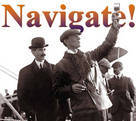
 Up
Up 
 Pilots,
Pilots,
Planes
and Pioneers

(You are here.)
 Down
Down




  Need
to Need
to
find your
bearings?
Try
these
navigation aids:
If
this is your first
visit, please stop by:
Something
to share?
Please:



|
|
Available in Française, Español, Português, Deutsch, Россию,
中文,
日本, and others.
 hile
the Wright brothers may have been the first to make a sustained,
controlled flight, they were just two among hundreds of brave men
and women who helped to give the world its wings during the earliest
days of aviation. Their Flyer was but one of many historically
important aircraft. Below are brief descriptions and photos of some
of the most important people and planes, and where available
resources and links where you can find more information. In some
cases, contributors have supplied expanded
histories and biographies. Those are listed at the right and linked below. hile
the Wright brothers may have been the first to make a sustained,
controlled flight, they were just two among hundreds of brave men
and women who helped to give the world its wings during the earliest
days of aviation. Their Flyer was but one of many historically
important aircraft. Below are brief descriptions and photos of some
of the most important people and planes, and where available
resources and links where you can find more information. In some
cases, contributors have supplied expanded
histories and biographies. Those are listed at the right and linked below.
A
 B
B
 C
C
 D
D
 E
E
 F
F
 G
G
 H
H
 I
I
 J
J
 K
K
 L
L
 M
M
N
 O
O
 P
P
 Q
Q
 R
R
 S
S
 T
T
 U
U
 V
V
 W
W
 X
X
 Y
Y
 Z
Z
|
|
 |
|
Charles and Gabriel Voison were brothers and best friends,
much the same as Wilbur and Orville Wright. Gabriel began flying in
1904, testing a type-du-Wright glider for designed Ernest
Archdeacon near Calais, France. In 1905, Gabriel formed the world's
first airplane manufacturing company with Louis Bleriot. The two did
not see eye to eye, however. In 1906 Gabriel bought Bleriot out and then
reformed the company with his brother Charles in Billancourt, France (not far from Jules Verne's home in Amiens). The
Voisons made airplanes to order and had a hand in many of the French
pioneer aircraft built before 1908, including Santos Dumont's
14-bis, which made the first successful flights in Europe in
1906. Their most successful designs were their own, beginning with
the Voison-Delagrange in 1907 -- the first to fly successfully after
Santos-Dumont. Also in 1907, the Voison-Farman I, piloted by Henri
Farman, flew 771 meters (1/2 mile) to win the Archdeacon Cup. This
airplane design – a type-du-Wright married to a box-kite tail
– became a workhorse for European aviators into the second decade of
the twentieth century. Charles Voison was killed in an automobile
accident in 1912, and Gabriel continued to manufacture airplanes
(mostly bombers) through World War I. After the war, he
abandoned aviation for the automotive industry. He made some of
France's finest luxury cars until he closed his factory in 1938. In
1945, he designed a mini-car, the Biscuiter, that was
manufactured in Spain during the 1950s. He died in France in 1973.
His memoirs, My Ten Thousand Kites, is one of the best
primary sources for information on pioneer aviation in Europe.
|
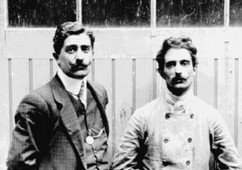
Charles and Gabriel Voison
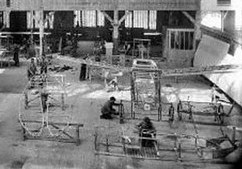
The Voison Brothers Aeroplane Company in Billancourt, France.
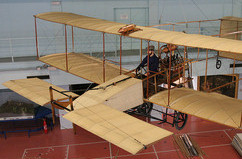
On 26 October 1907, Henri Farmans flew this Voison aircraft 1/2 mile
(771 meters) to win the Archdeacon Cup and 1500 francs. This replica
was built in the Voison factory in 1919.
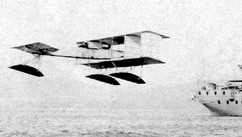
After building the 1906 14 bis, the Voison's continued to experiment
with canard aircraft such as this 1911 Voison Hydroplane.
|
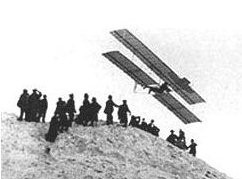
Gabriel Voison pilots Archdeacon's glider -- copied after the 1902
Wright Glider -- in 1904 at Calais.
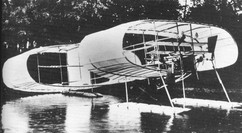
The 1906 Bleriot III was built by Gabriel Voison and Louis Bleriot.
It was Bleriot's first attempt at a powered flying machine.
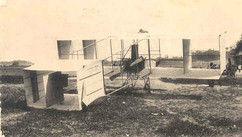
This 1910 biplane was typical of the standard Voison airplane during
the first years of aviation in Europe..
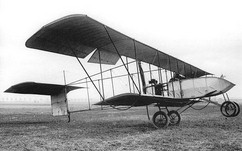
The Voison Militaire Type 1 was introduced in 1912 as a scout and
light bomber. In 1914 at the beginning of World War I, this became
the first aircraft to shoot down another aircraft (a German Aviatik).
|
 |
|
|
|

